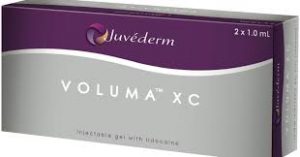
1. What is Juvederm?
Juvederm is made from hyaluronic acid (HA)and is FDA approved for cosmetic facial use. HA has come to replace collagen as the safest and easiest filler to use. All other filler compositions are now compared in effectiveness and safety to it. It is a natural sugar that is very familiar to your body because it is a part of the substance that is found in your joints. It is an advanced formulation over the initial one which came out earlier in the last decade. Juvederm comes in two formulations – Juvederm Ultra and Juvederm Ultra Plus.
2. What is the difference between Juvederm Ultra and Juvederm Ultra Plus? Which is right for me?
This is a gel formulation that is made in two ‘concentrations’ to be used for differing facial uses. When HA is made, it can be chemically cross-linked so that it can be last longer and be stiffer for more push of the overlying soft tissue. Juvederm Ultra Plus is a more robust formula to be used for deeper folds and wrinkles. Juvederm Ultra is the ‘lighter’ formula for more superficial facial wrinkles and folds.
3. Is there anything I should avoid before being treated?
One should avoid taking Aspirin, Motrin, Non- Steroidal Anti Inflammatory Medications (NSAIDs), St. John’s Wort or high doses of Vitamin E Supplements for two weeks prior to a Juvederm treatment. This will help to minimize any bruising or bleeding at the injection site.
4. How does Juvederm work?
Initially, the gel material acts as a volumetric filler simply occupying the space into which it was injected. That is obvious but what is interesting is what keeps in there for the duration of its effect. The hyaluronic gel acts like a sponge gathering in water. As the material slowly degrades, its volume is maintained because of the water that its has attracted. Eventually, there becomes more water than hyaluronic gel and the plumping effect goes away. This hydrophilic (water-attracting)property makes Juvederm last between eight to twelve months depending on the formulation. (greater cross-linking = longer-lasting)
5. Where in the face can Juvederm be injected?
Glabellar Furrows – lines between the eyebrows
Crow’s Feet – lines that form around the outer area of the eye
Forehead Lines – horizontal wrinkles above the brow
Nasolabial Folds – crease between the upper lip and the cheek
Marionette Lines – lines from the corner of the mouth downward
Lip Lines – vertical wrinkles on the lips
Smile Lines – lines that form from on the outer corners of the mouth to the cheek.
Lip Augmentation – adding volume to the lip
6. What side effects can occur with Juvederm injections?
Potential side effects are mild bruising, swelling or tenderness at the site of injection. These side effects, if they occur, will go away in a few days. Infection is always possible because it is an injection into and through the skin, but I have never seen it. By far, the most common side effects are small lumps and bumps from irregular distribution of the filler in the treated site. These can be massaged to smooth them out should they occur.
7. Are Juvederm treatments painful?
As you might imagine, sticking a needle into your face can not be like a relaxing spa treatment. No patient that I treat, however, gets injected ‘straight’ without some effort at trying to minimize discomfort. I have researched and use method that minimize discomfort using anesthetic agents such as topical creams and or local anesthetic injections. The needle used to inject Juvederm is very thin and is the smallest disposable needle made. This also helps to decrease discomfort.
8. Is Juvederm safe for all types of skin?
This is the first FDA-approved hyaluronic filler that has proven its safety and effectiveness in persons of color. Studies with Juvederm show no increased risk of pigment changes in African-Americans.
Dr. Barry Eppley
Indianapolis, Indiana


